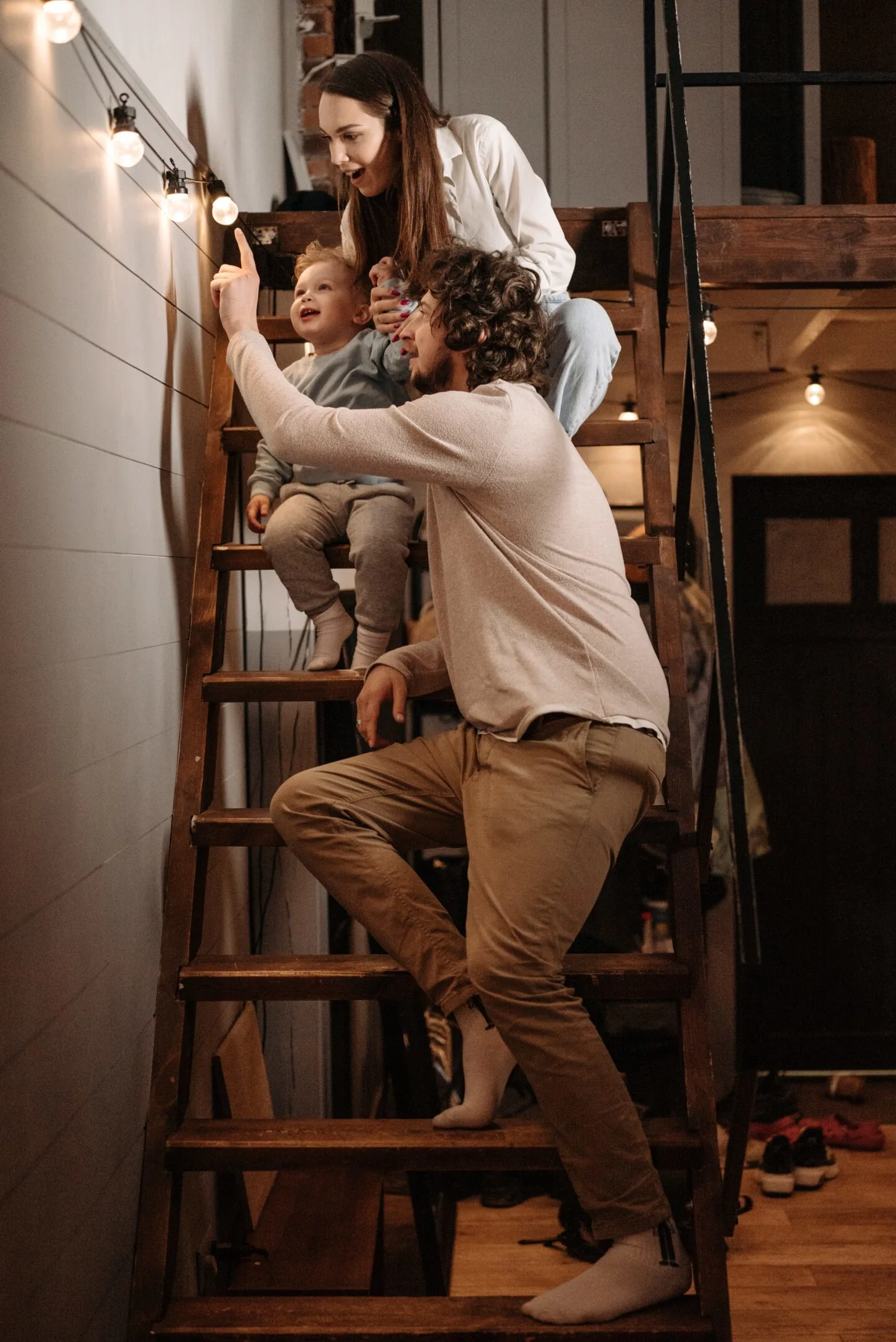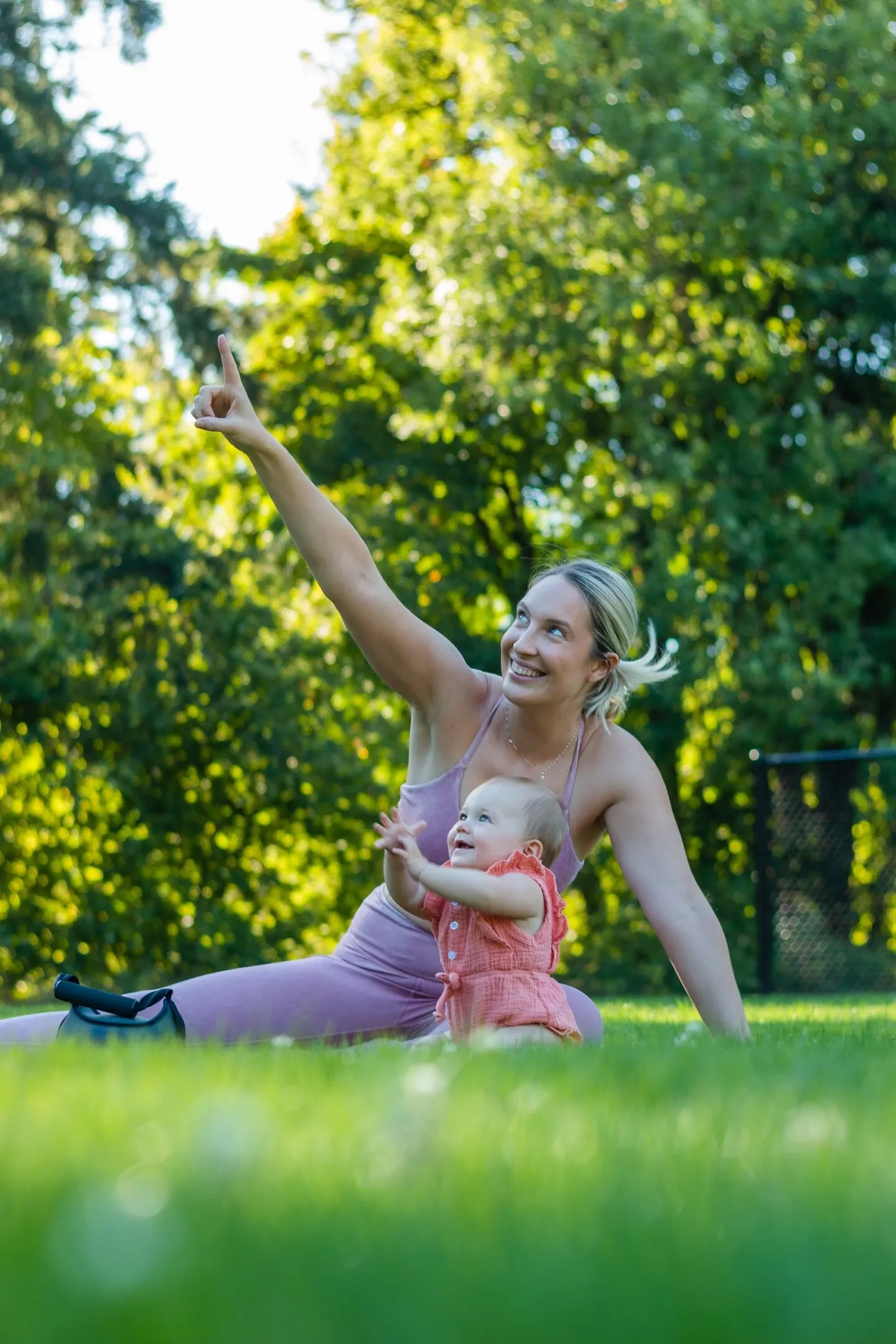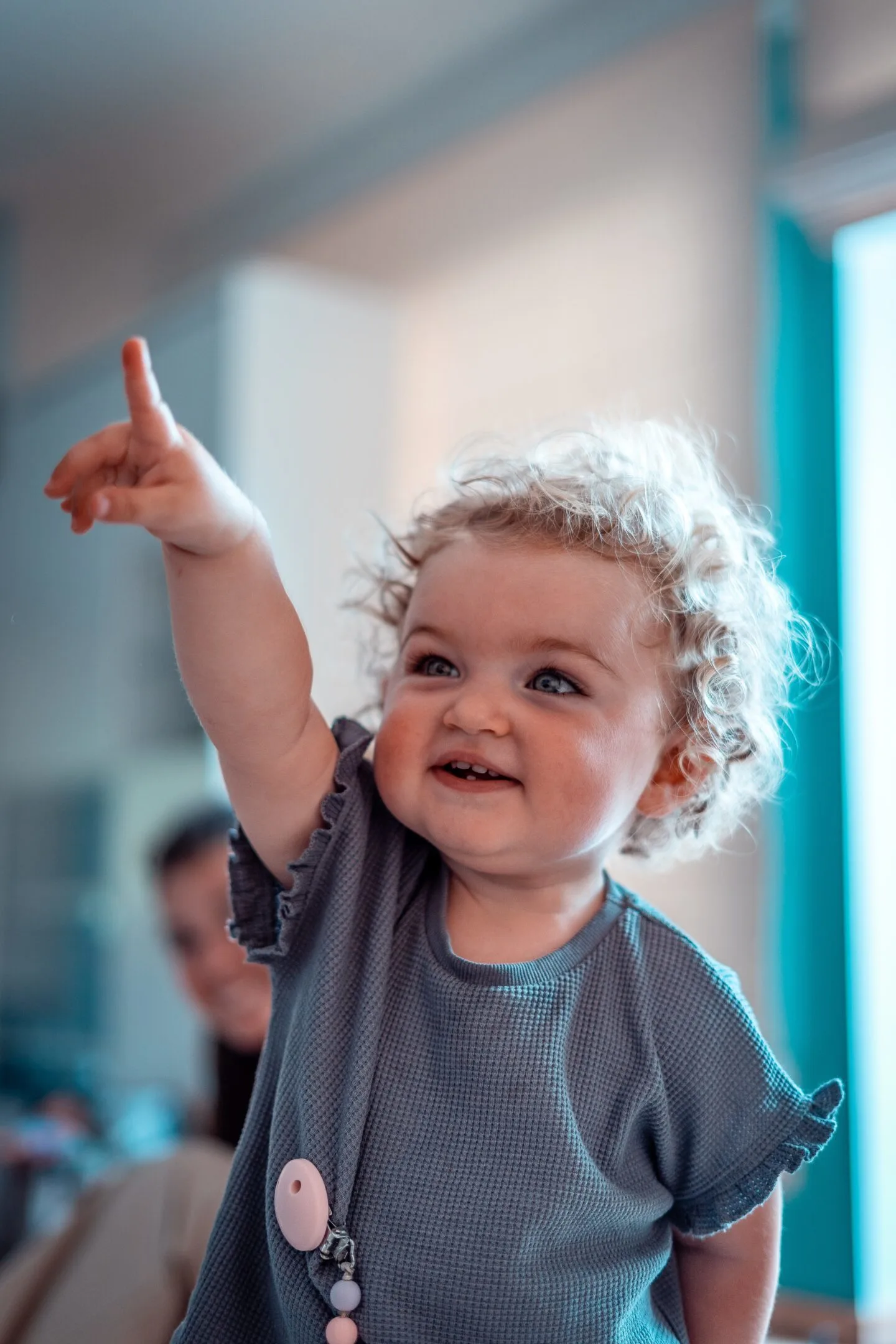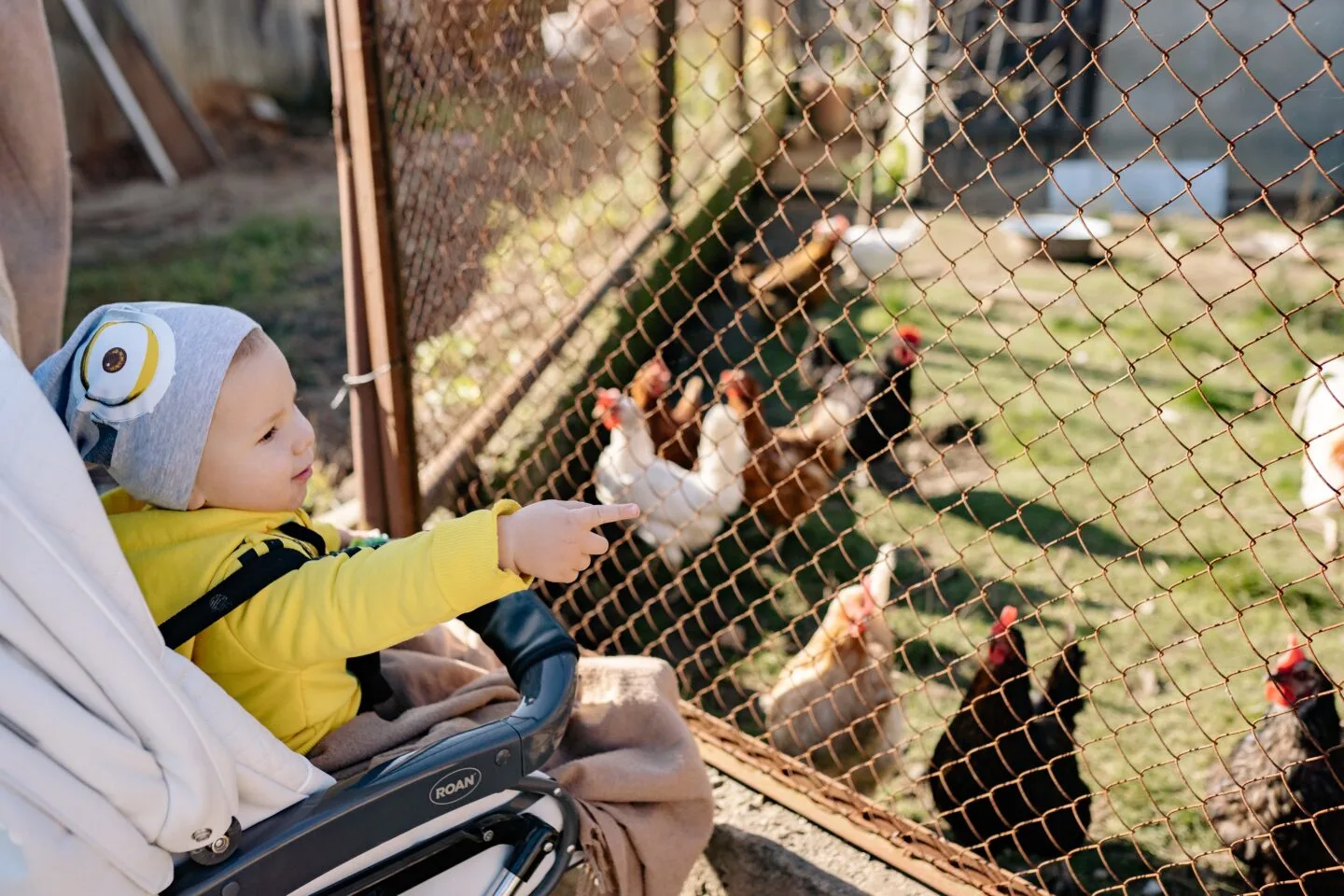Pointing is an exciting milestone in a baby’s development; after all, it’s one of the first clear signs of communication that your baby uses to express their wants and needs. There are two main reasons why babies point: to ask for something and to draw someone’s attention. If you want to know how to teach Baby to point, then you’re in the right place. This excellent communication milestone can be taught to your baby in just a few steps, so let’s get started.

Why do babies point?
If you want to know how to teach Baby to point, you’re first going to want to know the two main advantages of this communication milestone.
The first reason that babies start to point is to ask for something. Sometimes a baby will point to a toy they can’t reach, point at their milk, or even food that they want. This is called imperative pointing. The second reason that babies point is to draw the attention of someone. For example, sometimes a baby will point at something interesting, such as a dog, an aeroplane, or someone new walking into the room; this is called declarative pointing.
There are several signs to look out for that indicate your baby is about to point and there are also a few things that you can do to encourage it. In this blog post, we’re going to be looking at the following:
- The average age babies learn to point
- The common signs that indicate Baby is about to learn how to point
- How to encourage pointing in babies
- Is it normal for a baby to point with their whole hand?
- Why is pointing so important?
Let’s take a look at each point in turn.

The average age babies learn to point
If you want to learn how to teach Baby to point, you must first be sure that your baby is within the right age range to attain this exciting milestone. Although some babies do start to point a little earlier, it’s more common for children to begin pointing between the ages of 9 to 12 months, with many mastering the skill at around 11 months. It’s normal for babies that were born prematurely to take a little longer to learn to point, so don’t get worried if your baby takes a little longer than expected.
The common signs that indicate Baby is about to learn how to point
Before your baby starts pointing, they will first do what child experts call, ‘following a point’. This means that when you point to something and call attention to it, for example, “look, a dog!” your baby’s gaze will follow your point and their eyes will travel in the direction you pointed, as opposed to looking at your hand.

How to encourage pointing in babies
If your child is nearing the age when many babies commonly start pointing, you’re probably going to want to know more about how to teach Baby to point. One of the most effective ways to teach your baby a new skill is to model the behaviour yourself.
To do this, point out objects to your baby and name them. You could even hand your baby the items you pointed out for them to explore. Additionally, you can further encourage your baby’s pointing skills by asking them questions about the object you are pointing to, for example, “did you see the cat? Do you think it’s happy? What noise does a cat make? Shall we wave and say hello?”.
When learning how to teach Baby to point, start off easily by pointing to things that are nearby. You could point to a toy that is in front of your baby, or maybe to the food that they’re eating. As Baby starts to recognise the gesture, you can take things a step further by pointing to objects that are a little further away, such as an item across the room, or a dog that’s running around whilst you’re on a walk.

Is it normal for babies to point with their whole hand?
One query that comes up a lot when parents search for how to teach Baby to point is whether or not pointing with their whole hand, rather than just their index finger, counts as pointing.
It’s absolutely normal for a child to begin pointing using their whole hand. Babies will gradually start to switch from their entire hand to their finger as they gain more control and are able to isolate their index finger to point with. It’s also common for babies to make noises when pointing at objects.
Therefore, if your baby is currently pointing using their whole hand to point at interesting objects, you can expect this to change over the coming weeks.

Why is pointing so important?
Pointing may seem like a simple gesture that is cute and funny for grown-ups, however, the ability to point is actually a very important developmental milestone for babies. Pointing is an easy form of communication that gets two people thinking about the same thing.
Pointing enables your baby to communicate directly with their grown-up, enabling them to communicate their wants and desires in a constructive way. Pointing is the very first form of language communication that babies learn; in order to be good at communicating, babies learn to point first and add words second.
As we mentioned earlier in this post, there are two forms of pointing: imperative pointing and declarative pointing. These two kinds of pointing can be easily broken down into ‘showing’ and ‘requesting’ points. A baby will point to show you the dog, and a baby will also point to request objects, such as food.

When To Visit Your Child’s Health Provider
If you’ve been struggling with how to teach Baby to point and they still haven’t grasped the gesture by around 15 – 18 months, it may be worth discussing this with your child’s GP or health visitor. If this is the case, you should watch out for other milestones that could be delayed too as this could be a sign of developmental delay that can indicate your baby is on the outer bands of what experts consider “typical”.
Other Big Milestones That Happen Around The Same Time
After you’ve mastered how to teach Baby to point, there are plenty of other exciting milestones to come. Once they’ve mastered pointing, you can start to see some new and exciting developments, such as:
- Pointing to body parts when asked to
- Enjoying pretend play and role play
- Following simple commands
- Bringing items to show you
- Learning new words
- Learning to walk
- Bringing you items that you have asked them to fetch

Conclusion
Learning how to teach baby to point is a great way to help your child develop their communication skills. Pointing is such a huge milestone and can open up a whole new world of play and adventure for parents and babies alike. The best way to encourage your baby to point is to model the behaviour yourself by pointing at interesting objects that are both near and far away. Each baby is unique, and the age that baby masters pointing can vary, however, it’s typically advisable that if your baby reaches the 18 month mark and still doesn’t show an interest in pointing, it may be worth talking to your baby’s health visitor or GP.
